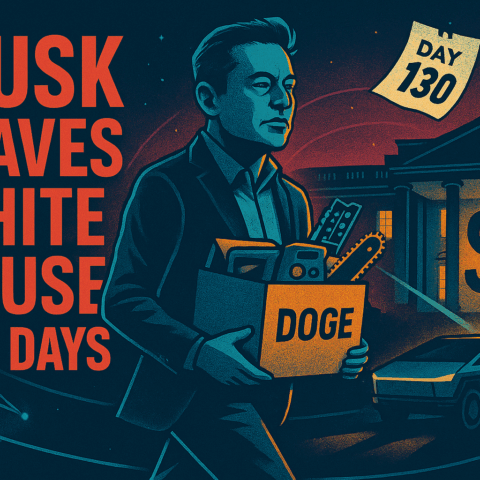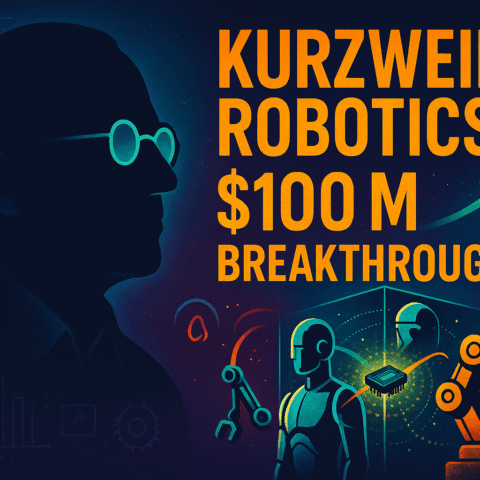Valve CEO Gabe Newell is pursuing brain-computer interface technology through two distinct ventures: Starfish Neuroscience, a medical-focused startup developing minimally invasive brain chips for late 2025 launch, Cryptopolitan +2 and Valve’s own gaming-oriented BCI projects using non-invasive technology. NeoGAFFuturism Starfish’s ultra-compact chip (2×4mm) consumes just 1.1mW of power— Cryptopolitan +2making it 5.5 times more efficient than Neuralink’s device— BundleRoad to VRwhile Valve separately explores consumer applications that could transform gaming by detecting player emotions and adapting experiences in real-time. PC Gamer +2 This dual approach positions Newell to attack both the $2.8 billion medical BCI market BCC Research +2 and the untapped consumer gaming segment, though Starfish remains in pre-clinical development without FDA approvals Bundle while competitors like Synchron and Neuralink advance through human trials. ReutersReuters
Starfish Neuroscience emerges from stealth with breakthrough specifications
Starfish Neuroscience, incorporated in 2019 but operational since 2022, represents Gabe Newell’s primary BCI venture—a separate company from Valve based in Bellevue, Washington. Cryptopolitan +4 The startup’s flagship brain chip boasts remarkable technical specifications: measuring just 2×4mm with 32 electrode sites and 16 simultaneous recording channels operating at 18.75kHz. The chip’s 1.1mW power consumption enables battery-free wireless operation, a significant advancement over competing systems. TalkEsportNewsbytesapp Developed in partnership with nanoelectronics leader imec and manufactured using TSMC’s 55nm process, the device features onboard data processing, spike detection, and stimulation capabilities. Cryptopolitan +2
The company recently updated its website and began seeking early-stage collaborators in wireless power delivery and implantable neural devices, signaling its emergence from stealth mode. Cryptopolitan +2 Co-founded with neuroscientist Philip Sabes TalkEsport (who departed in 2024), the team includes COO Rebekah Englishbee, hardware engineer Alan Yates, and several neuroscientists. Starfishneuroscience +2 Unlike Valve’s gaming initiatives, Starfish focuses exclusively on medical applications for neurological disorders, positioning its minimally invasive approach as an alternative to more invasive competitors. Cryptopolitan +3
Behind the curve on clinical progress despite technical innovation
While Starfish’s technical specifications impress, the company significantly lags competitors in clinical development and regulatory progress. No FDA approvals, clinical trials, or patents appear in public databases for Starfish Neuroscience, placing it years behind established players. Blackrock Neurotech leads with over 20 years of human trial experience and 40+ patients implanted, Tether while Synchron has 10 patients using its endovascular device and prepares for pivotal FDA trials. Yahoo Finance +2 Even Neuralink, despite recent setbacks with electrode thread retraction, has three patients implanted and active FDA-approved trials. Wikipedia +3
The late 2025 timeline for Starfish’s first chips targets research collaborators rather than clinical deployment, CryptopolitanRoad to VR suggesting human trials remain years away. BundleRoad to VR Competitors have secured substantial advantages: Synchron raised $75 million with backing from Jeff Bezos and Bill Gates’ investment firms, CNBCFreethink Paradromics received FDA Breakthrough Device Designation, Wikipedia and Precision Neuroscience achieved limited FDA clearance for 30-day clinical use. CNBCYahoo Finance This clinical gap represents Starfish’s most significant challenge in a market where regulatory approval typically requires 3-7 years from first human trials.
Valve’s parallel gaming initiative targets untapped consumer market
Separate from Starfish, Valve pursues non-invasive BCI technology for gaming applications through partnerships with OpenBCI and integration with existing VR hardware. Road to VR +10 This consumer-focused approach sidesteps lengthy FDA approval processes while leveraging Valve’s 120+ million Steam users and hardware expertise from products like the Valve Index and Steam Deck. The gaming applications include real-time emotion detection for adaptive difficulty, Grandviewresearch VR motion sickness suppression, and what Newell describes as experiences that make “the real world seem flat, colorless, blurry” by comparison. TNW +6
Valve’s strategy involves open-source collaboration and developer tools, with modified VR headsets incorporating EEG sensors for brain signal reading. Road to VR +6 Former Valve psychologist Mike Ambinder, who led BCI research from 2019-2023, emphasized the potential for “10-30ms reaction time improvement” in competitive gaming. Road to VR +4 The company’s dual-track approach—Starfish for medical devices and Valve for consumer applications—allows simultaneous pursuit of the $2.8 billion medical BCI market and the largely untapped consumer segment projected to grow as the technology matures. BCC Research +3
Competitive landscape reveals both opportunities and obstacles
The brain-computer interface market, valued at $2.1-2.8 billion in 2024 and projected to reach $4.5-12.87 billion by 2030, Straitsresearch +4 presents a complex competitive environment. StraitsresearchWorld Economic Forum Starfish’s ultra-low power consumption and miniaturization offer genuine technical advantages, CryptopolitanRoad to VR but the company faces formidable competitors with deeper pockets and clinical experience. Bundle The BCI landscape divides between medical-first companies like Neuralink ($373 million funding), Synchron, Reuters and Blackrock, RossdawsonYahoo Finance versus Valve’s consumer-first gaming approach that could capture early mainstream adoption. Yahoo Finance
Industry challenges include signal quality versus invasiveness trade-offs, long-term biocompatibility, real-time processing of neural data, IDTechEx and cybersecurity concerns that Newell himself acknowledges: “Nobody wants to say, ‘Oh, remember Bob? Remember when Bob got hacked by the Russian malware?'” Futurism +4 Expert opinions remain mixed, with neuroscientists supporting research advancement while emphasizing safety protocols and ethical frameworks. The market’s 14.2% compound annual growth rate CoherentmarketinsightsBusiness Wire reflects both opportunity and uncertainty as companies race to overcome technical hurdles. BccresearchWorld Economic Forum
Conclusion: High ambitions meet harsh realities in 2025 timeline
Gabe Newell’s brain-computer interface ambitions represent a serious, well-funded effort combining Starfish Neuroscience’s medical technology with Valve’s gaming applications, targeting a late 2025 launch for research chips. Cryptopolitan +3 The ventures demonstrate genuine technical innovation—particularly in power efficiency and miniaturization—while pursuing a unique dual-market strategy. Cryptopolitan +2 However, Starfish’s lack of clinical data, regulatory approvals, or human trial experience places it years behind competitors who already navigate FDA processes with implanted patients.
The 2025 timeline appears aspirational for human applications given regulatory realities, though research collaborations and non-invasive gaming applications may proceed faster. Bundle Newell’s vision of BCI as an “extinction-level event for entertainment” The Washington Post remains speculative, TechRadarRoad to VR but Valve’s resources, ecosystem advantages, and open-source approach position it uniquely for consumer market entry. Road to VRRoad to VR Success hinges on whether technical advantages can overcome the clinical and regulatory head start of established competitors, and whether consumers will embrace brain-reading technology for entertainment despite privacy and security concerns.








